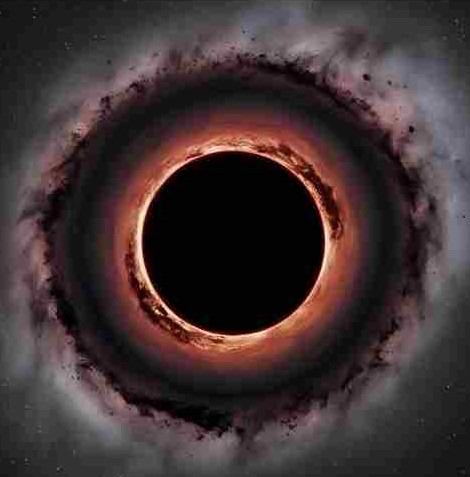Many Black Holes Are Hiding in Space
Black holes are notoriously difficult to detect. Some are obscured by thick clouds of dust, which makes locating them even more challenging. However, a recent study may have shed light on the number of black holes that remain hidden from our view.
Most large galaxies contain a supermassive black hole at their core. These black holes are incredibly massive, with weights equivalent to billions of Suns. Their intense gravitational pull draws in gas and dust, resulting in a bright, hot center. Surrounding this center is a cooler ring of dust known as a torus.
When we observe a black hole from above, we can see its luminous center through the opening in the torus. However, viewing it from the side means the dust ring obstructs our line of sight.
Fortunately, scientists have found ways to detect these concealed black holes. The dust surrounding them absorbs light and then emits it in infrared wavelengths, which specialized telescopes can pick up. This capability allows for the identification of both hidden and visible black holes using infrared technology.
A research team analyzed data from NASA’s Infrared Astronomical Satellite (IRAS), which was launched in 1983. They identified hundreds of potential black holes. Subsequently, they utilized NASA’s NuSTAR X-ray telescope to validate their discoveries.
NuSTAR played a crucial role by detecting high-energy X-rays that can penetrate dust clouds. This capability enabled the researchers to distinguish between easily observable black holes and those that are obscured.
According to study leader Peter Boorman from Caltech, the findings were unexpected. The research revealed that 35% of black holes are concealed behind thick dust clouds. Previous studies had estimated that only 15% were hidden, indicating that the number of concealed black holes is greater than previously believed.
Astronomers theorize that black holes grow by attracting nearby gas and dust. If this is accurate, many should indeed be shrouded by a torus. The study suggests that approximately half of all black holes may be hidden, aligning with scientists’ expectations.
This discovery enhances our understanding of how black holes form and evolve, without necessitating changes to existing theories.







